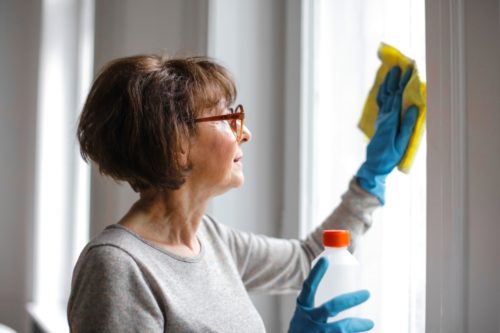4 Signs That Your Houseplants Are Suffering

D uring the first wave of COVID-19 in 2020, the sales of indoor plants grew a whopping 9 percent in Australia. But now that you bought yourself some green friends as a hobby while you were locked indoors, you have no idea how to make sure they’re alright. Don’t worry! These 4 signs that your houseplants are suffering should be sufficient to know something may be wrong.
Before You Buy Plants
Before you get into making your indoor garden a reality, keep in mind that just like pets, plants are an investment. Yes, they're easier to keep than a cat or say a dog, but they still have their own requirements, needs, and especially a fit atmosphere that needs to be tailored to them.
Plants, while they make for a productive hobby, are not something you can be interested in for two days and then give up. Be mindful that when you buy plants, you are ready to take care of them, and invest some effort into them.
However, sometimes, even when we try to do our best, we can lag behind. That's not a problem per se, we just need to identify what we're doing wrong and then fix it. Here are some concerns you should keep an eye out for.
- Wilting Leaves
If you notice that the leaves of your plant are wilting, it's time to check how much you are watering it, or how much sunlight it gets. Leaves can wilt due to both too much and too little water.
It is possible that the soil does not have enough water, therefore the plant loses more water than it absorbs, and loses structural integrity, in turn looking weak. This makes the plant look like it is wilting. Sometimes the solution is very simple, just water your plants a bit and see if the leaves become less droopy in the morning.
If not, maybe your plant has too much exposure to sunlight, but this one depends on how much sun your plant needs.
- Yellowing Leaves
If you see that the leaves of your favorite houseplant are turning yellow, it's a cause for concern. Again, this could be because of a lack of water.
When plants don't have enough water, they cannot uptake the minerals and nutrients that they require to survive. In turn, they form deficiencies, and their leaves lose chloroplasts and chlorophyll (the thing that gives them that green color).
It can also be due to fertilizer problems, so if water doesn't solve your problem, try to add some fertilizer to the soil or change the one you are using.
- Not Holding Water
If you water your plant frequently but notice there are little beads of water atop the beading mix, it’s a sign that water isn’t penetrating deep enough to reach the roots. There are two factors that could lead to this, either the plant is too big for its pot (see #4) or the soil has somehow become hydrophobic.
To check, gently remove the plant from the pot. If the roots reach the bottom, the plant needs a new home. If there’s still some potting mix left that can hold more roots, your soil may be repelling water, which is what hydrophobic potting mix does. This happens when the soil remains dry for a long time.
- Roots Coming Out of the Surface
Just as you require new clothes that fit you while you are growing, plants need new pots, too. When you buy a baby plant, chances are that you will be changing a few pots over its lifetime.
If you see that your plant is growing out its roots from the drainage holes at the bottom of the pot, it's time to buy a new pot. If you require more surety about your decision, gently shake the pot a little to prepare the plant to be removed. Take it out and check the roots. If you notice roots in a circular formation at the bottom of the pot, know that it’s time for a new home for the plant.
It’s Likely Not Too Late
If something seems wrong with your houseplant, try not to worry or go into panic mode. It’s likely just your plant asking for care and attention, and if you read up on how to properly care for the species you have, you will likely save the plant.
These 4 signs that your houseplants are suffering are not death sentences for your indoor garden, it’s just a warning notice, and if you look after them, they’ll be alright.








